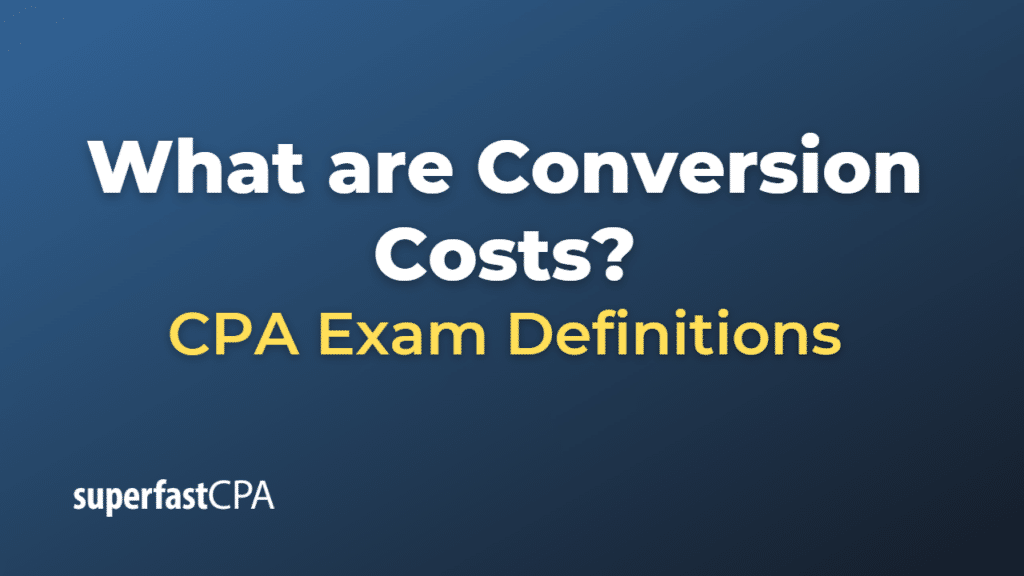Conversion Costs
Conversion costs are the expenses incurred in the manufacturing process to convert raw materials into finished goods. These costs include direct labor and manufacturing overhead costs but exclude direct material costs. Conversion costs are essential in understanding the total expenses involved in producing a product, as they help businesses determine the appropriate selling price for their goods and identify potential areas for cost reduction.
- Direct Labor: Direct labor costs are the wages paid to workers who are directly involved in producing a finished product. These workers include machine operators, assembly line workers, and other personnel whose efforts are directly linked to manufacturing the goods.
- Manufacturing Overhead: Manufacturing overhead costs, also known as indirect manufacturing costs, are expenses that are not directly tied to a specific product but are essential to the manufacturing process. These costs include factory utilities, rent or mortgage payments for the production facility, equipment maintenance and depreciation, factory supplies, indirect labor (e.g., supervisors, quality control staff, and maintenance workers), and other production-related expenses.
To calculate conversion costs, simply add the direct labor costs and the manufacturing overhead costs:
Conversion Costs = Direct Labor + Manufacturing Overhead
Understanding conversion costs is important for businesses as they use this information to set their product prices, track production efficiency, and make decisions about resource allocation and cost control measures.
Example of Conversion Costs
Let’s consider a hypothetical example of a company that produces wooden furniture and calculate the conversion costs for one of their products.
Suppose XYZ Furniture Co. manufactures wooden chairs, and we have the following cost information for a single production batch of 100 chairs:
- Direct Material Costs: $5,000 (wood and other raw materials)
- Direct Labor Costs: $3,000 (wages for workers who assemble the chairs)
- Manufacturing Overhead Costs: $2,000 (utilities, equipment maintenance, depreciation, etc.)
To calculate the conversion costs for this production batch, we need to add the direct labor costs and manufacturing overhead costs:
Conversion Costs = Direct Labor + Manufacturing Overhead
Conversion Costs = $3,000 + $2,000
Conversion Costs = $5,000
In this example, the conversion costs for producing 100 wooden chairs are $5,000. This information can help XYZ Furniture Co. determine the total production cost per chair, set the appropriate selling price, and identify areas where they can potentially reduce costs or improve production efficiency.
To calculate the cost per chair, we would add the direct material costs and the conversion costs, then divide the total by the number of chairs produced:
Total Production Cost = Direct Material Costs + Conversion Costs
Total Production Cost = $5,000 (Direct Material) + $5,000 (Conversion Costs)
Total Production Cost = $10,000
Cost per Chair = Total Production Cost / Number of Chairs Produced
Cost per Chair = $10,000 / 100
Cost per Chair = $100
In this example, the cost of producing one wooden chair is $100, which XYZ Furniture Co. can use to set their selling price and make informed decisions about cost control measures and resource allocation.













